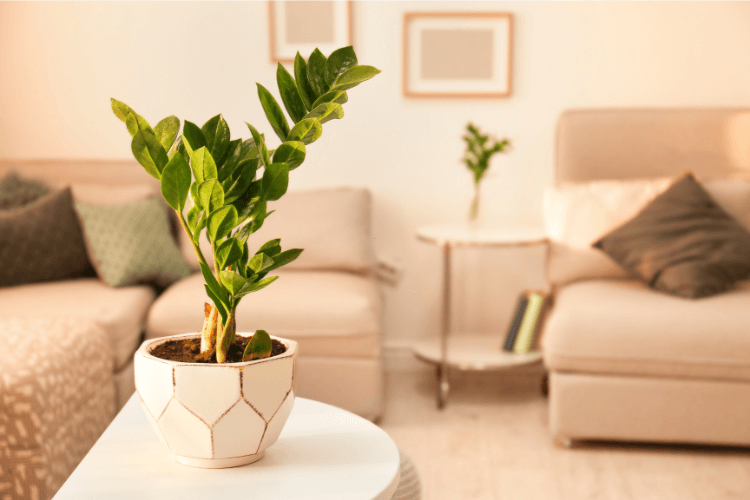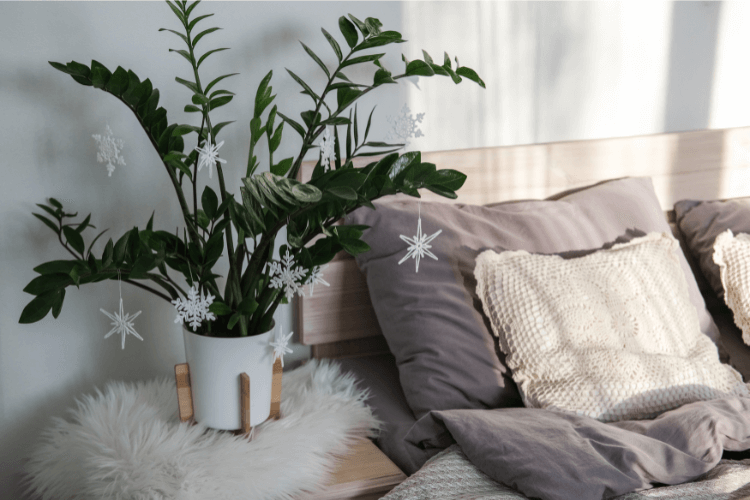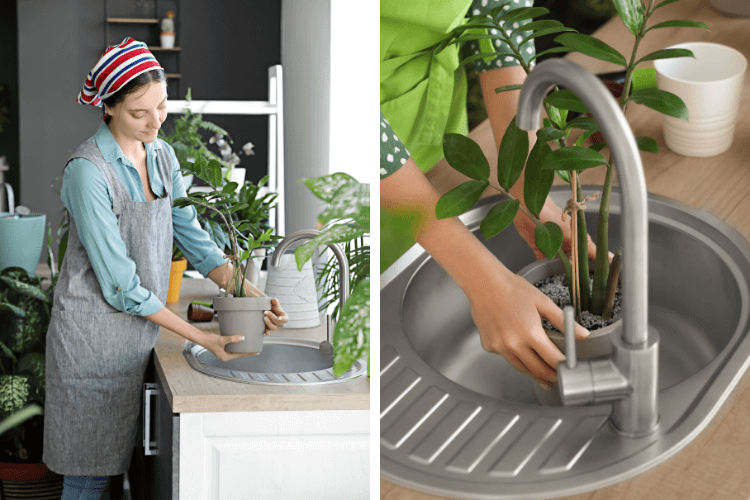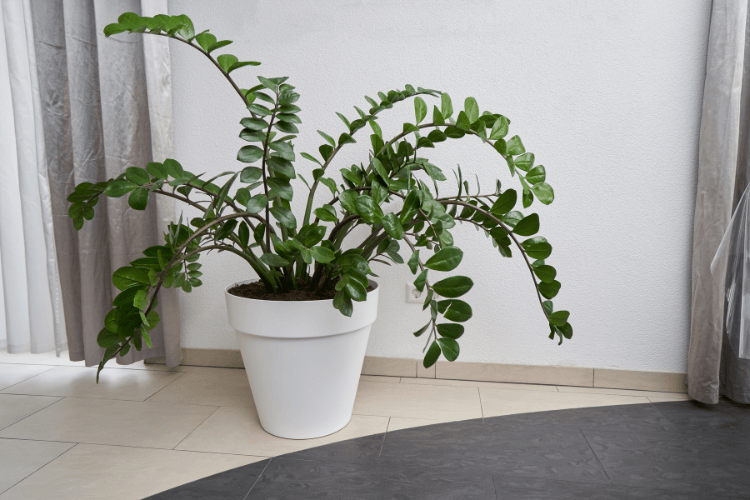Have you ever returned home after a long day and found solace in the calming presence of a lush, vibrant ZZ plant? Imagine your living space transformed into a green oasis where every leaf whispers a secret about nature’s resilience. In this guide, you’ll discover how to create the perfect environment for your ZZ plant by understanding its ZZ Plant Light Requirements. Whether you’re a seasoned plant enthusiast or just beginning your green journey, this article is designed to help you navigate indoor lighting challenges while boosting your plant’s health and beauty.
Table of Contents
Introduction to ZZ Plant Light Requirements
When it comes to indoor gardening, nothing is as crucial as proper lighting. Your ZZ plant, celebrated for its low maintenance and striking appearance, thrives when it receives just the right balance of natural and artificial light. Understanding ZZ Plant Light Requirements is the first step toward ensuring your plant not only survives but flourishes in your home.
In this article, you’ll learn about:
- The science behind why light is essential for plant health.
- How to choose the best indoor spots for your ZZ plant.
- Tips for integrating artificial lighting options like a zz plant led light or grow light for zz plant.
- Solutions for common issues such as zz plant yellow leaves.
- Seasonal adjustments, including strategies for winter care.
Understanding ZZ Plant Light Requirements & ZZ Plant Care

Why Light Matters for Your ZZ Plant
Lighting is the heartbeat of your indoor garden. Without sufficient light, even the hardiest of plants may struggle. For your ZZ plant, the intensity and duration of light exposure directly influence its photosynthesis process—a fundamental mechanism that converts light into the energy it needs to grow. If you’ve ever wondered how to make your ZZ plant thrive or even how to make zz plant grow faster, it all starts with understanding its light needs.
Consider these important points:
- Photosynthesis and Energy: Light is vital for the production of chlorophyll, which fuels your plant’s growth.
- Balanced Exposure: Too much or too little light can lead to issues such as zz plant yellow leaves, which is a common sign that your plant might not be getting the right amount of light.
- Interconnected Care: Your ZZ plant’s overall care includes not just light but also zz plant water requirements and proper fertilization. A well-lit environment supports these other aspects of care.
How Light Affects Growth & Maintenance
Light doesn’t only influence the health of your ZZ plant—it also impacts its growth rate and appearance. For instance, insufficient lighting can result in slower growth, whereas the right lighting conditions can boost the plant’s vibrancy and energy. Here are a few insights:
- Growth Rate: When you provide the right light, your ZZ plant can grow more robustly, making it an excellent way to boost your indoor garden’s overall aesthetic.
- Watering Considerations: Remember that how often to water zz plant often ties directly into its light exposure. More light may mean faster water evaporation, so you might need to adjust your watering routine accordingly.
- Avoiding Disadvantages: Overexposure or poor lighting can lead to zz plant disadvantages like leaf burn or stagnated growth. Learning to balance these factors is key to long-term success.
6 Ideal Indoor Spots for Your ZZ Plant
Finding the right spot for your ZZ plant can seem challenging, but you have several options that suit different lighting conditions. Here are six ideal indoor spots that meet the ZZ Plant Light Requirements:
1. Living Room

- Why It Works: The living room often provides balanced natural light throughout the day, perfect for sustaining your ZZ plant.
- Benefits: Enhances your home’s ambiance and serves as a centerpiece for your indoor garden.
2. Bedroom

- Why It Works: Bedrooms usually offer a softer, more diffused light that creates a calm, relaxing environment.
- Benefits: A ZZ plant in your bedroom can contribute to improved air quality and a peaceful atmosphere.
3. Office/Study

- Why It Works: Positioning your ZZ plant in an office or study can boost productivity while providing a touch of nature to your workspace.
- Benefits: Natural greenery has been shown to reduce stress and enhance concentration.
4. Kitchen

- Why It Works: Kitchens typically have windows that filter sunlight, offering indirect yet beneficial light.
- Benefits: Not only does your plant thrive, but it also adds a refreshing, natural element to your cooking space.
5. Hallway

- Why It Works: Even smaller spaces like hallways can be transformed into green corridors with the right lighting.
- Benefits: Maximizes your home’s aesthetic appeal without sacrificing functional space.
6. Entryway
- Why It Works: An entryway that catches just the right amount of light can create a welcoming environment for both you and your guests.
- Benefits: Sets a warm, inviting tone as soon as you or your visitors walk through the door.
Enhancing Growth with the Right Lighting Tools
Choosing the Perfect Lighting for Your ZZ Plant
Not all indoor environments are blessed with perfect natural light. Fortunately, you can supplement with artificial options that match your ZZ plant’s needs. Consider these factors when selecting lighting:
- Natural vs. Artificial: While natural light is ideal, artificial lighting can bridge gaps during cloudy days or winter months.
- Artificial Lighting Options: Look into options like a zz plant led light or grow light for zz plant. These are designed to mimic natural sunlight and can help your plant flourish in low-light conditions.
- Adjustability: Choose lights that allow you to control brightness and duration, ensuring your plant gets exactly what it needs.
Integrating Technology with Nature
Modern technology has made it easier than ever to care for your indoor garden. Smart lighting systems can automate your plant care routine, adjusting light levels based on the time of day or seasonal changes. Here’s how you can leverage these tools:
- Smart Home Integration: Consider integrating smart lighting systems that you can control with your phone. This means you can adjust settings even when you’re away.
- Energy Efficiency: Modern LED lights are energy efficient, reducing both your electricity bill and your environmental footprint.
- Customization: Many systems allow you to tailor the light spectrum to your ZZ plant’s unique requirements, ensuring optimal growth.
Troubleshooting Common Issues
Even with the best care, you might encounter challenges along the way. Here’s how you can troubleshoot some common issues:
ZZ Plant Yellow Leaves: Causes & Solutions
Yellowing leaves can be a sign that something isn’t quite right. It might be due to improper light, watering habits, or nutrient deficiencies. Here’s what you can do:
- Check Your Light: Ensure that your plant is receiving balanced light—neither too harsh nor too dim.
- Watering Adjustments: Revisit your zz plant water requirements. Overwatering or underwatering can both cause yellow leaves.
- Nutrient Balance: Consider supplementing with a balanced fertilizer, and check if your plant’s soil needs refreshing.
- Additional Factors: Reflect on any changes in the environment that might have impacted your plant’s health.
Addressing ZZ Plant Disadvantages & Care Challenges
While ZZ plants are known for their resilience, they’re not without their quirks:
- Overexposure Risks: Too much light can scorch your plant, so balance is key.
- Indoor Challenges: If your space has fluctuating light conditions, your plant might show stress signs. Adjust its location gradually to help it adapt.
- Pet Safety: If you have pets, particularly cats, be aware of the potential risks. Although ZZ plants are generally non-toxic, some varieties or individual sensitivities may lead to issues. Research thoroughly if you’re concerned about zz plant toxic to cats or if you’re wondering, are zz plants toxic to cats.
Seasonal Adjustments: ZZ Plant Light Requirements in Winter
Winter brings unique challenges to indoor gardening. With shorter days and reduced sunlight, your ZZ plant may need extra care.
Adjusting Light Levels in Colder Months
During winter, natural light is limited. Here’s how to keep your plant thriving:
- Supplement with Artificial Light: Use a zz plant led light or grow light for zz plant to mimic natural sunlight. This can help prevent issues like zz plant yellow leaves caused by insufficient light.
- Monitor Temperature: Ensure your plant isn’t exposed to drafts or extreme temperature changes. This is especially important when dealing with zz plant light requirements in winter.
- Routine Adjustments: You may need to adjust your watering and fertilization schedules. Cooler temperatures mean less water evaporation, so you might water less frequently.
Measuring Light: ZZ Plant Light Requirements Celsius
Understanding light intensity in relation to temperature can be crucial:
- Light Intensity: Learn how to measure light levels and understand that your ZZ plant’s needs might change as temperatures drop.
- Practical Tips: Invest in a simple light meter if you’re serious about providing the optimal conditions. This tool will help you gauge whether your plant is receiving enough light even when the sun isn’t as strong.
- Balancing Act: By monitoring both light and temperature, you ensure your plant adapts smoothly to seasonal changes without stress.
Propagation & Variegation: Expanding Your Indoor Garden
Once you’ve mastered the care of your ZZ plant, you might be excited to expand your indoor garden. Propagation not only allows you to multiply your greenery but also deepens your understanding of plant care.
How to Propagate Your ZZ Plant
Propagating your ZZ plant can be a fulfilling experience. Here’s a step-by-step guide to help you:
- Preparation: Start by selecting a healthy section of your plant. Sterilize your tools to prevent infections.
- Division Process: Gently separate the plant’s rhizomes. Make sure each section has at least one healthy leaf and some roots.
- Aftercare: Plant the divided sections in well-draining soil and place them in an area that meets the ZZ Plant Light Requirements. Keep the soil slightly moist until new growth appears.
- Patience is Key: Remember, propagation takes time. Monitor the new growth and adjust your care routine as needed. This process not only helps you learn how to propagate zz plant but also reinforces the importance of proper lighting and overall care.
Exploring Varieties: Raven, Variegated, and Black ZZ Plant
The world of ZZ plants is rich with variety. Some of the most popular include:
- Raven ZZ Plant: Known for its striking dark foliage, the raven variant adds a dramatic flair to your indoor garden.
- Variegated ZZ Plant: This variety features distinct patterns on its leaves, making it a unique conversation starter.
- Black ZZ Plant: With its deep, almost black leaves, this variant exudes elegance and is perfect for modern interiors.
- Caring for Varieties: Although these variants are stunning, they share similar ZZ Plant Light Requirements. However, slight adjustments may be necessary based on the plant’s unique appearance and growth habits.
Recipes for Success: DIY Fertilizer for Your ZZ Plant
To complement the right light and overall care, nutrient-rich soil is essential for your ZZ plant’s health. Creating your own DIY fertilizer can be both cost-effective and rewarding. Here’s a simple recipe to give your plant an extra boost:
DIY Fertilizer Recipe Ingredients
| Ingredient | Amount | Benefit |
|---|---|---|
| Distilled Water | 1 Liter | Hydration without impurities |
| Organic Fertilizer | 1 Tablespoon | Provides essential nutrients |
| Epsom Salt | 1 Teaspoon | Aids in magnesium absorption |
| Seaweed Extract | 1 Tablespoon | Enhances overall growth and vitality |
How to Use the Recipe:
- Mix Thoroughly: Combine all the ingredients in a clean container.
- Application: Water your ZZ plant with this solution every 4-6 weeks during the growing season.
- Monitor: Observe how your plant responds, and adjust the recipe if needed to avoid over-fertilization.
This DIY fertilizer not only supports the ZZ Plant Light Requirements but also ensures that your plant receives a balanced diet for optimal growth.
FAQs About ZZ Plant Light Requirements
Q1: What are the best indoor spots for my ZZ plant considering its ZZ Plant Light Requirements?
A: Ideal spots include your living room, bedroom, office, kitchen, hallway, and entryway. These areas offer the right mix of natural and supplemental light to keep your plant thriving.
Q2: How do I manage zz plant water requirements alongside lighting needs?
A: Water your ZZ plant based on the intensity of the light it receives. In brighter spots, the soil may dry out faster, so you might need to water more frequently. In lower-light areas, reduce the watering frequency to avoid root rot.
Q3: Can I use a zz plant led light or grow light for zz plant in low light conditions?
A: Yes, both options work well to supplement natural light. These tools help maintain the ZZ Plant Light Requirements, especially in environments with limited sunlight.
Q4: What should I do if I notice zz plant yellow leaves?
A: Yellow leaves can indicate either too much or too little light. Evaluate your plant’s location and adjust its light exposure accordingly. Also, check your watering habits and consider if your plant’s nutritional needs are being met.
Q5: Are ZZ plants toxic to cats, and how can I safely display them at home?
A: Generally, ZZ plants are considered low risk, but some cats might have sensitivities. If you’re concerned about zz plant toxic to cats or wondering, are zz plants toxic to cats, place your plant in areas that are less accessible to your pets.
Conclusion
Understanding and meeting the ZZ Plant Light Requirements is essential for creating a thriving indoor garden that enhances your home’s ambiance and promotes a sense of well-being. By carefully selecting the right indoor spots—from your living room to your entryway—and integrating both natural and artificial lighting, you set your ZZ plant on a path to robust growth. Remember, your plant’s success depends on a holistic approach: balancing light, water, nutrients, and the right environmental conditions.
As you experiment with these techniques, keep an eye out for subtle changes in your plant’s appearance, such as improvements in leaf color and overall vitality. With a bit of patience and adjustment, you’ll not only enjoy the beauty of your indoor garden but also experience the joy of nurturing a living piece of nature.
Call to Action:
Now that you’re equipped with the knowledge to master your ZZ plant’s light needs, why not take action today? Reassess your indoor spaces, try out a new lighting setup, and even experiment with that DIY fertilizer recipe. Share your journey with friends or online plant communities, and let your green oasis inspire others. Your thriving ZZ plant is just a few mindful adjustments away from becoming the centerpiece of your home!
By embracing these insights and integrating the techniques outlined above, you’re well on your way to transforming your indoor space. Whether you’re addressing common issues like zz plant yellow leaves or exploring innovative solutions like smart lighting systems, every step you take makes a significant difference in the health and beauty of your plant.
Remember, indoor gardening is not just about following guidelines—it’s about creating an environment that resonates with your personal style and enhances your well-being. With each carefully chosen spot in your home and every adjustment to your care routine, you reinforce the importance of nurturing nature in your everyday life.
Keep experimenting with different indoor locations and lighting setups. Whether you’re aiming to optimize your plant’s growth by learning how to propagate zz plant or discovering the unique charm of the raven zz plant, your journey in indoor gardening is filled with opportunities to learn and grow. Embrace the process, celebrate every success, and remember that your efforts not only benefit your ZZ plant but also contribute to a healthier, more vibrant living space.
As you move forward, make sure to revisit this guide whenever you need a refresher on the ZZ Plant Light Requirements. By staying informed and proactive, you ensure that your indoor garden remains a source of inspiration and tranquility. Enjoy every moment of nurturing your green companion, and let its enduring vitality be a testament to your dedicated care.
By following these comprehensive steps, you are now fully equipped to provide your ZZ plant with the optimal lighting conditions it needs. From choosing the best indoor spots to troubleshooting common issues and adjusting care routines seasonally, every tip and strategy mentioned here is designed with your success in mind.
If you’re ready to elevate your indoor gardening game and transform your living space, don’t hesitate to put these strategies into practice today. Join the growing community of indoor gardeners who have experienced the profound benefits of understanding and meeting the ZZ Plant Light Requirements. Your plant, your home, and your overall well-being will thank you for it.
Embrace the beauty of nature indoors and let your ZZ plant serve as a constant reminder of the rewards that come from thoughtful care and attention. Happy planting, and may your indoor garden thrive for years to come!

